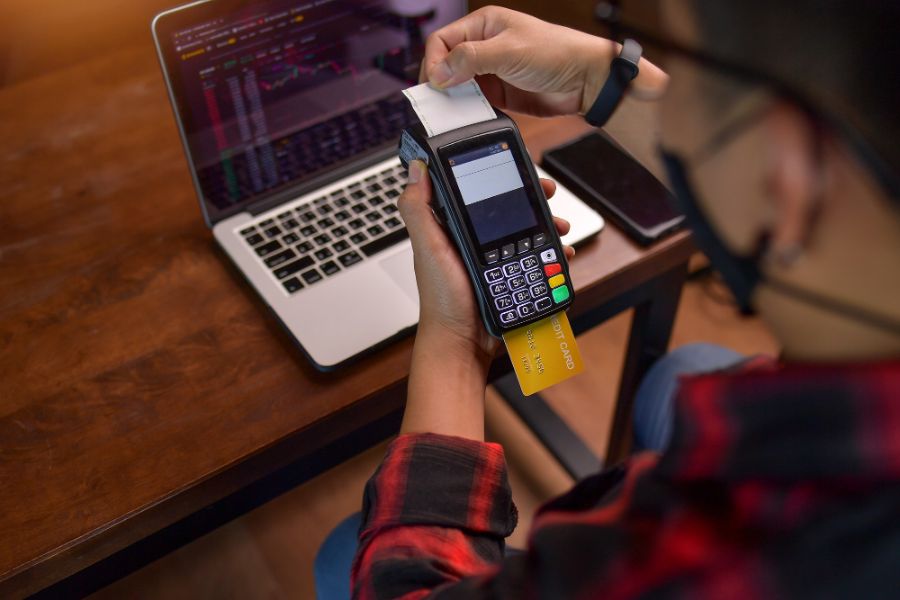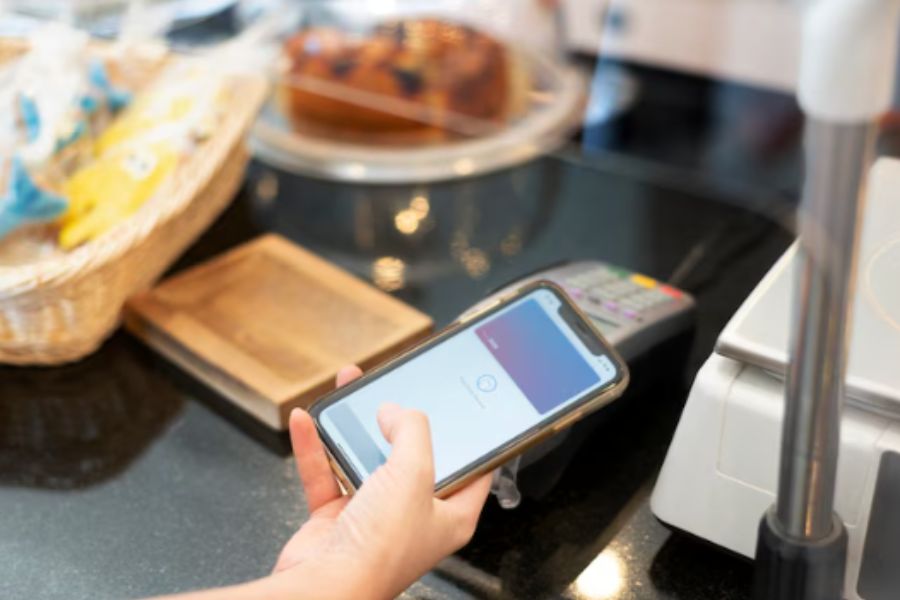In today’s fast-paced, digital-first marketplace, businesses must prioritize agility, integration, and automation to stay competitive. One powerful tool enabling this transformation is the Point-of-Sale (POS) API—a technology that connects POS systems with other software platforms for real-time data exchange and seamless operations.
By leveraging a POS API, companies can unify in-store and online sales, automate inventory management, and enhance customer experiences across all touchpoints. From retail and hospitality to eCommerce and mobile sales, this integration helps businesses streamline operations, eliminate manual processes, and scale effortlessly.
In this article, we’ll explore what a POS API is, how it works, its key benefits, and why it’s a must-have for businesses aiming to drive growth, support omnichannel strategies, and deliver frictionless checkout experiences in 2025 and beyond.
What is a POS API?
A POS API (Point of Sale Application Programming Interface) is a set of programming instructions and protocols that allows different software applications to interact with a point of sale (POS) system. Essentially, it enables third-party applications (like inventory management, eCommerce platforms, accounting software, CRM, etc.) to integrate with a POS system to exchange data and perform actions automatically.
How Does a POS API Work?
A POS API acts as a bridge between different systems, enabling them to communicate and exchange information. For example:
- When a customer makes a purchase, the POS API updates inventory levels automatically.
- It transmits transaction details to accounting software for financial tracking.
- It integrates with loyalty programs, ensuring customers earn rewards instantly.
- It allows eCommerce and physical stores to sync sales data for a unified shopping experience.
Point-of-Sales API Overview
An API, or Application Programming Interface, facilitates communication between two software components. It does so using a set of defined methods and protocols, allowing for the smooth exchange of data.
A Point-of-Sales (POS) API specifically enables mobile users to activate POS applications to process payments directly. This capability is essential for developers aiming to create bespoke POS solutions or applications that handle payment transactions without the need for direct hardware integration.
Additionally, a POS API enhances flexibility by allowing for the integration of various payment methods and customization of the user interface. This adaptability makes it invaluable for businesses looking to provide a seamless checkout experience.
Key Features of Point-of-Sales APIs
A Point-of-Sale (POS) API is a powerful tool that enables businesses to integrate, automate, and optimize their sales processes. Whether for retail, hospitality, or eCommerce, a well-designed POS API enhances efficiency, improves customer experiences, and ensures seamless connectivity between different systems. Here are the key features that make POS APIs essential for modern businesses:
1. Seamless Integration: POS APIs allow businesses to connect with third-party applications like CRM, ERP, accounting software, and eCommerce platforms, ensuring a unified business ecosystem.
2. Real-Time Data Syncing: With real-time synchronization, businesses can track inventory levels, sales transactions, and customer data across multiple locations without delays.
3. Multi-Payment Processing: POS APIs support various payment methods, including credit/debit cards, digital wallets, mobile payments, and BNPL (Buy Now, Pay Later) solutions, catering to diverse customer preferences.
4. Inventory Management: An advanced POS API helps retailers monitor stock levels, set automated restocking alerts, and prevent overstocking or stockouts, improving supply chain efficiency.
5. Cloud-Based Accessibility: Many modern POS APIs operate in the cloud, allowing business owners and managers to access sales reports, monitor transactions, and manage operations remotely.
6. Enhanced Security & Compliance: POS APIs ensure secure data transmission, compliance with PCI DSS standards, and fraud detection mechanisms to protect businesses and customers from security threats.
7. Customization & Scalability: Businesses can customize POS API functionalities to match their specific needs, making it easier to scale as the company grows or expands to new locations.
8. Omnichannel Support: A robust POS API facilitates integration between online and offline sales channels, providing a consistent shopping experience across physical stores, websites, and mobile apps.
9. Automated Tax & Receipt Management: POS APIs can automatically calculate taxes, generate digital receipts, and send invoices, simplifying compliance and record-keeping.
10. AI-Driven Analytics & Reporting: Advanced POS APIs offer AI-powered insights into sales trends, customer behavior, and operational performance, enabling businesses to make data-driven decisions.
These features collectively contribute to making POS APIs powerful tools for modernizing and streamlining retail operations.
How does the Point-of-Sales API Work?
The POS API functions by utilizing an application switch—a mechanism that toggles between your custom POS application and a standard point-of-sale system to manage various functionalities like payments and ordering. Initially, when activated, it transitions to a point-of-sale app, allowing users to process payments by swiping a card, dipping it into a reader, or using NFC tap methods. Once the payment is processed, the system automatically reverts to the custom POS application.
The POS API usually uses an application switch, that is, an application that switches between a custom POS and a Point of Sale application to handle all needs, such as payment and ordering. When it starts, it automatically switches to a point-of-sale app where users can swipe, dip a card, or tap on the device for NFC payments. After payment, the app will switch back to your custom POS.
The process flow
The operational flow of a POS API begins when the merchant’s mobile application calculates the total amount due from the customer. This app then packages the transaction details and sends them to the point-of-sale system for processing. After the payment is processed through this system, the device switches back to the merchant’s app, which then displays the transaction results to the user.
Data model
In the POS API, the data model typically includes several crucial pieces of information:
- Total transaction amount: Represented in the smallest unit of the currency.
- Currency code: Identifies the currency used in the transaction.
- Payment types Allowed: Specifies which payment methods can be used.
- Callback URL: Where to send the response after the transaction completes.
- App ID and API version: Identify the application and the version of the API being used.
These components ensure that the POS API can handle transactions smoothly and securely, providing a seamless experience for both merchants and customers.
Benefits of Point-of-Sales API
The POS API offers numerous advantages to businesses by enhancing their operational capabilities and improving customer interactions.
- Streamlined order management
The POS API simplifies the process of importing orders from various sales channels. Its integrated delivery system ensures that businesses can manage orders efficiently across different platforms.
- Enhanced product and customer management
With the POS API, businesses can effortlessly retrieve, add, and update product and customer lists. This powerful feature boosts the efficiency of managing inventory and customer relationships.
- Real-time data synchronization
One of the standout benefits of the POS API is its ability to synchronize data across multiple platforms in real time. This includes inventory updates, which help businesses meet customer demands promptly and accurately.
- Improved customer relationship management
The API facilitates the synchronization of customer data, enhancing the overall customer experience. This enables businesses to engage in effective email marketing, integrate customer information into CRM systems, and analyze customer behavior to tailor marketing strategies more precisely.
ConnectPOS exemplifies the powerful capabilities of POS APIs in enhancing retail operations. As a leading solution, it facilitates seamless integration with various sales channels, ensuring real-time inventory and sales data synchronization. This integration supports diverse payment methods and offers robust security features to protect sensitive transaction information.
By using ConnectPOS, businesses can provide a smoother checkout experience, leading to increased customer satisfaction and loyalty. Its intuitive interface and advanced features demonstrate how effectively a POS API can be leveraged to drive business growth and operational efficiency.

Challenges and Considerations of Point-of-Sale API
While POS APIs offer significant benefits, there are several challenges and considerations that businesses must address to ensure successful implementation and operation:
- Security concerns
POS systems handle sensitive payment information, making them prime targets for cyberattacks. Ensuring robust security measures, including data encryption and compliance with industry standards such as PCI DSS, is crucial.
- Integration complexity
Integrating a POS API with existing systems can be complex, especially for businesses with legacy systems or those using multiple software solutions. Careful planning and possibly custom development work may be required.
- Scalability issues
As businesses grow, their POS systems must scale accordingly. Ensuring that the POS API can handle increased transactions and data without performance degradation is essential.
- Regulatory compliance
Different regions have varying regulations governing electronic transactions and data privacy. Businesses must ensure that their POS systems comply with all relevant laws to avoid legal penalties.
- User training and support
Employees need proper training to use new POS systems effectively. Additionally, ongoing support is necessary to address any issues that arise during daily operations.
- Cost implications
Implementing and maintaining a POS API can involve significant costs, including initial setup, subscription fees, and ongoing maintenance expenses. Businesses need to consider these costs against the expected ROI.
By carefully considering these challenges and planning accordingly, businesses can maximize the benefits of POS APIs while minimizing potential drawbacks.
Conclusion
In the competitive business environment, leveraging technology like the Point-of-Sale (POS) API is essential for enhancing customer engagement and streamlining operations. A POS API not only simplifies sales processes by integrating various channels and managing real-time data but also fosters innovation through improved customer experiences. By adopting this technology, businesses can offer faster, smoother transactions and personalized service, which are crucial for boosting customer satisfaction and loyalty. Ultimately, effectively utilizing a POS API can transform operational capabilities and drive significant growth, making it a valuable investment for any forward-thinking company.
Incorporating ConnectPOS into your business operations exemplifies the strategic advantage of utilizing advanced POS APIs. By choosing ConnectPOS, companies can experience firsthand the operational efficiencies and enhanced customer interactions that a sophisticated POS API offers, driving growth and improving service quality. To see ConnectPOS in action, book a demo today.



